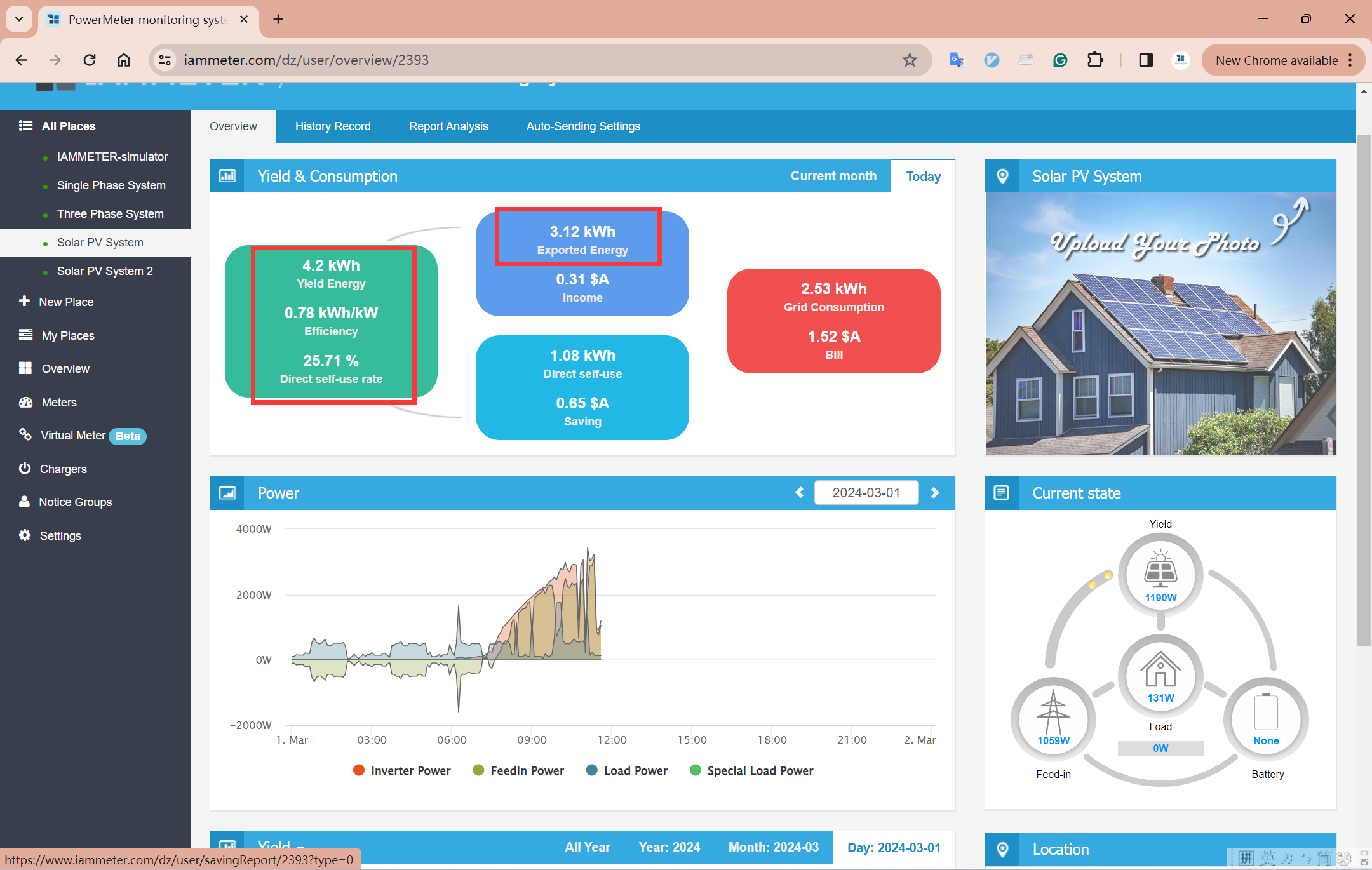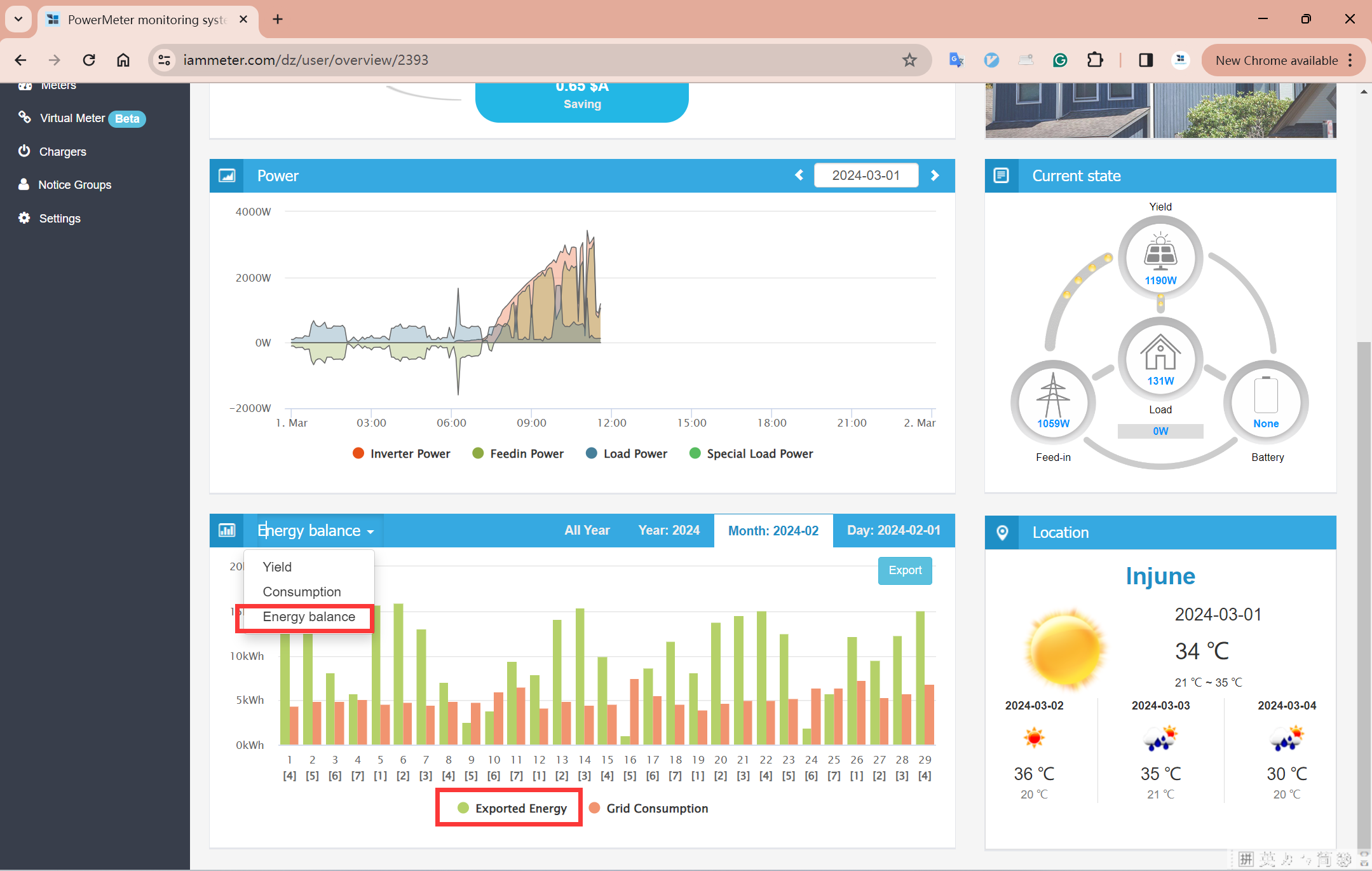Hi I just bought a meter from you guys i see in the simulator package you have you can try already allot off things.
But would it be possible to simulate a battery it would be good to see the simulation to size your battery and inverter for that.
also to size your battery what do you need from size battery.
So you can look what the discharge you would need from the battery inverter.
Hi:
We haven't previously included battery simulation in the IAMMETER simulator.
However, we're currently planning to introduce an exciting feature on IAMMETER-cloud.
Through the virtual meter, we aim to assist customers in evaluating the potential return on investment for their solar PV systems before they install the solar PV inverter. Additionally, if feasible, we're considering adding battery simulation to enhance the evaluation system further. This addition will provide users with a comprehensive understanding of the benefits and potential outcomes of their solar PV and battery installations.
HI,
I already have solar panels and that is why i what to do this simulation.
to see what battery i need and what inverter for charging in discharging.
If you already have a solar PV utility and wish to analyze whether you require a battery and determine its capacity, you can do so without the need for a simulator. By monitoring the solar PV system through IAMMETER, you can track the exported kWh and self-use rate daily.
Ideally, you aim for zero exported kWh, indicating that all kWh produced are consumed by your system (achieving a self-use rate of 100%). To increase the self-use rate, you have two options:
- Open high-load appliances when the inverter output is high (e.g., around noon).
- Introduce a battery storage system.
If you can utilize nearly all of the solar yield kWh solely by controlling the load, then a battery storage system may not be necessary. However, if even after optimizing the control logic, you still find some kWh being exported to the grid, then you can determine the required battery size based on the expected daily exported kWh.


This is about how to monitor your solar PV in IAMMETER
https://www.iammeter.com/newsshow/monitor-solar-pv-iammeter-20240228
Of course, the premise of the above post is that the feed-in tariff is significantly lower than the electricity price. If the feed-in tariff exceeds the electricity price, it's advantageous to export as much kWh to the grid as possible, making a battery unnecessary.
Higher feed-in tariffs typically occurred for early adopters of solar PV systems installed nearly 10 years ago.
In recent years, the feed-in tariff has been much lower than the electricity price. For example, when your electricity price is $0.3 USD, the feed-in tariff may only be $0.05 USD. This price difference makes energy storage systems (batteries) useful.
IAMMETER-cloud also provides a report to help customers analyze the potential profitability when introducing a battery system.
https://www.iammeter.com/docs/solar-report#report-3---bill--income--saving

For example, let's consider a scenario where your solar PV system produces 20 kWh every day, with a self-use rate of around 20% before introducing an energy storage system. The feed-in tariff is $0.05 USD, and the peak electricity price is around $0.4 USD.
After introducing the battery, you may earn an additional $5.6 USD every day: 20 kWh×0.8×(0.4−0.05)=5.6 USD
Of course, this is just a simple evaluation.
Predicting Benefits of Battery Storage Based on Actual Usage
https://www.iammeter.com/newsshow/report-predict-benefit-battery-storage
